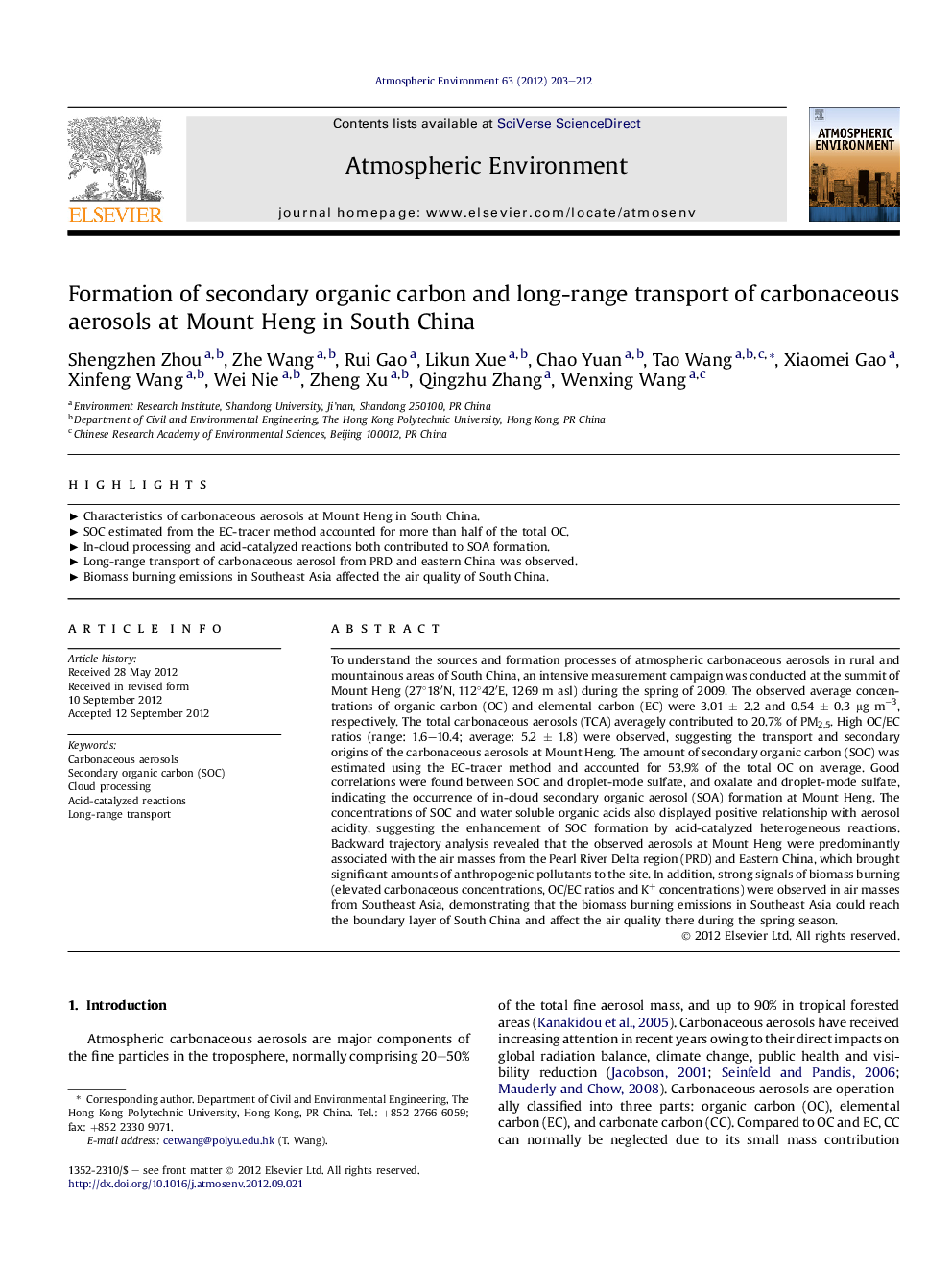| Article ID | Journal | Published Year | Pages | File Type |
|---|---|---|---|---|
| 4438612 | Atmospheric Environment | 2012 | 10 Pages |
To understand the sources and formation processes of atmospheric carbonaceous aerosols in rural and mountainous areas of South China, an intensive measurement campaign was conducted at the summit of Mount Heng (27°18′N, 112°42′E, 1269 m asl) during the spring of 2009. The observed average concentrations of organic carbon (OC) and elemental carbon (EC) were 3.01 ± 2.2 and 0.54 ± 0.3 μg m−3, respectively. The total carbonaceous aerosols (TCA) averagely contributed to 20.7% of PM2.5. High OC/EC ratios (range: 1.6–10.4; average: 5.2 ± 1.8) were observed, suggesting the transport and secondary origins of the carbonaceous aerosols at Mount Heng. The amount of secondary organic carbon (SOC) was estimated using the EC-tracer method and accounted for 53.9% of the total OC on average. Good correlations were found between SOC and droplet-mode sulfate, and oxalate and droplet-mode sulfate, indicating the occurrence of in-cloud secondary organic aerosol (SOA) formation at Mount Heng. The concentrations of SOC and water soluble organic acids also displayed positive relationship with aerosol acidity, suggesting the enhancement of SOC formation by acid-catalyzed heterogeneous reactions. Backward trajectory analysis revealed that the observed aerosols at Mount Heng were predominantly associated with the air masses from the Pearl River Delta region (PRD) and Eastern China, which brought significant amounts of anthropogenic pollutants to the site. In addition, strong signals of biomass burning (elevated carbonaceous concentrations, OC/EC ratios and K+ concentrations) were observed in air masses from Southeast Asia, demonstrating that the biomass burning emissions in Southeast Asia could reach the boundary layer of South China and affect the air quality there during the spring season.
► Characteristics of carbonaceous aerosols at Mount Heng in South China. ► SOC estimated from the EC-tracer method accounted for more than half of the total OC. ► In-cloud processing and acid-catalyzed reactions both contributed to SOA formation. ► Long-range transport of carbonaceous aerosol from PRD and eastern China was observed. ► Biomass burning emissions in Southeast Asia affected the air quality of South China.
